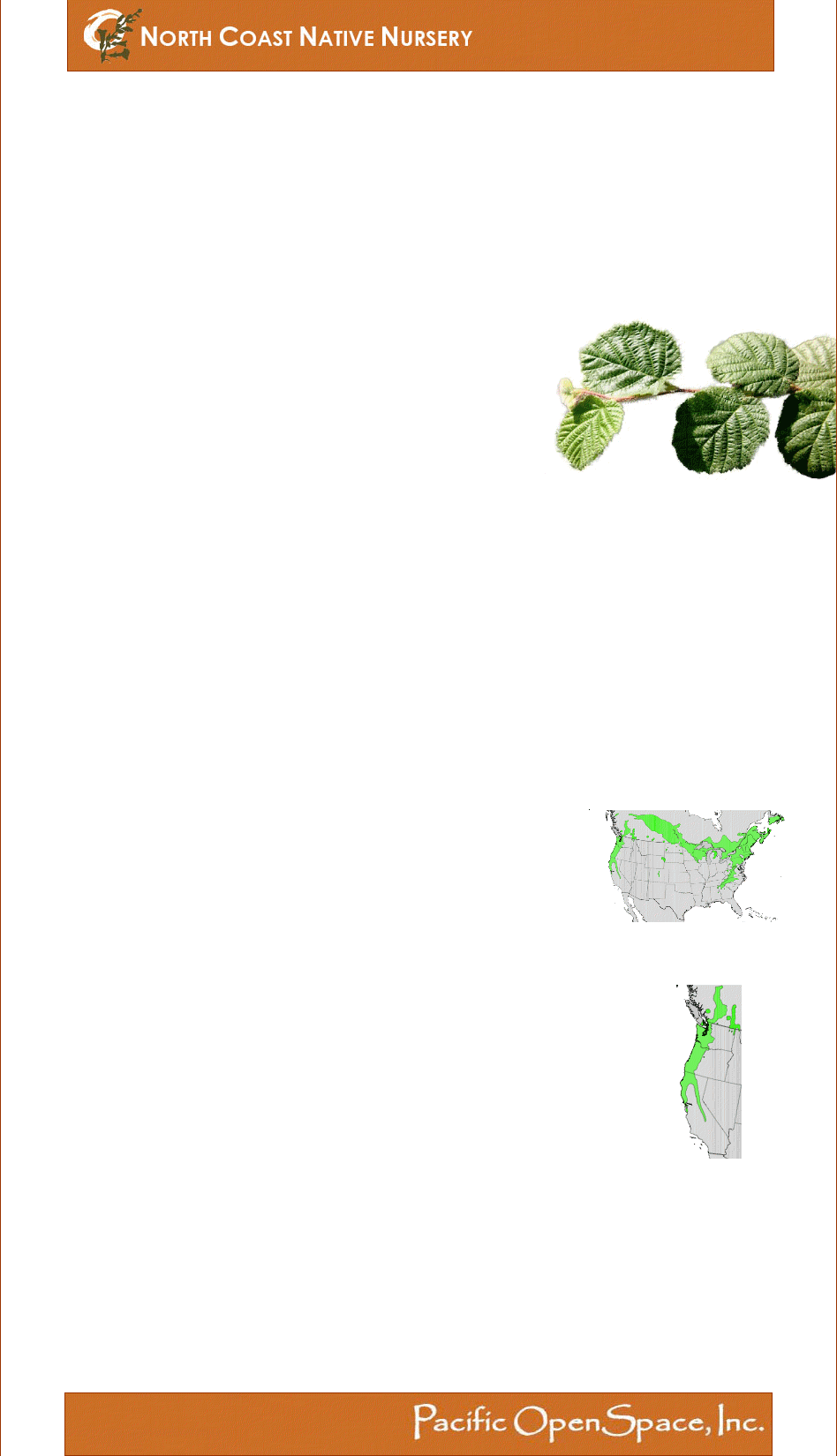 |
||
Range of Corylus cornuta var. californica
from "Atlas of United States Trees"
- Elbert L. Little, Jr.
Western Hazelnut
Corylus cornuta var. californica
Native Plant Species
Range of Corylus cornuta
from "Atlas of United States Trees"
- Elbert L. Little, Jr.
Foliage and branching
Cronquist System |
|
Order: |
Fagales |
Family: |
|
Genus: |
|
APG System |
|
Order: |
Fagales |
Family: |
Betulaceae |
Genus: |
Corylus |
Description |
|||
Description: |
Corylus cornuta var. californica is a small deciduous tree with a rounded crown. It grows between 5 and 12 ft in height.. It is normally found growing in the shade of other trees, although it can be grown in full sun, especially as you approach the coast. |
||
Branching: |
Alternate |
||
Leaves: |
Simple leaves with toothed margins. They have a felty layer of smaller hairs |
||
Flowers: |
Hazelnut flowers grow in catkins in late winter. |
||
Fruit: |
The seeds are hazelnuts, which resemble small acorns. Instead of an acorn cap, they are covered with a leafy husk. The hairs on the husks are short but bristly, and may be irritating. The hazelnut itself is smooth, with no hairs. Hazelnuts ripen starting in mid to late August. |
||
Plant Relationships |
|||
Related California Species: |
(None) |
||
Related Exotic Species: |
Corylus americana |
American hazelnut (E US) |
|
Growing Conditions |
|||
Natural Range and Habitat: |
Corylus cornuta var. californica grows in coastal and mountainous terrain, from northern California to British Columbia. |
||
Sun and Exposure: |
Corylus cornuta is shade tolerant. It is normally found growing in the understory of large, established trees. |
||
Soil and Moisture Requirements: |
Hazelnut grows in forests with well developed forest soils. They do not require a high water table, as they are usually found on hillsides, but they do require a reliable moisture supply in summer. |
||
Horticulture and Restoration |
|||
Wildlife Habitat: |
|||
Restoration: |
Corylus cornuta is only infrequently used in restoration, because restoration sites are usually in full sun, while Corylus benefits from growing in the shade. |
||
Uses in Landscaping: |
Hazelnut grows well in the full sun, although it is also very tolerant of shade. Plants in full sun should either be in locations that are not too hot and dry, or they will need some supplemental irrigation. |
||
Horticultural Comments: |
Sunset zones 1-9, 14-20 |
||
Back to start page
